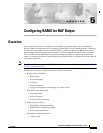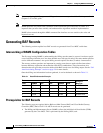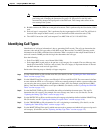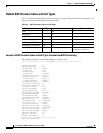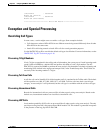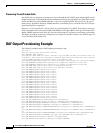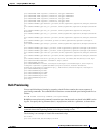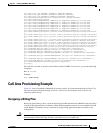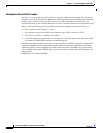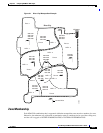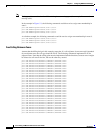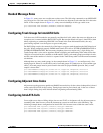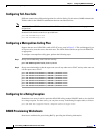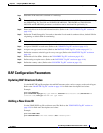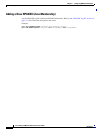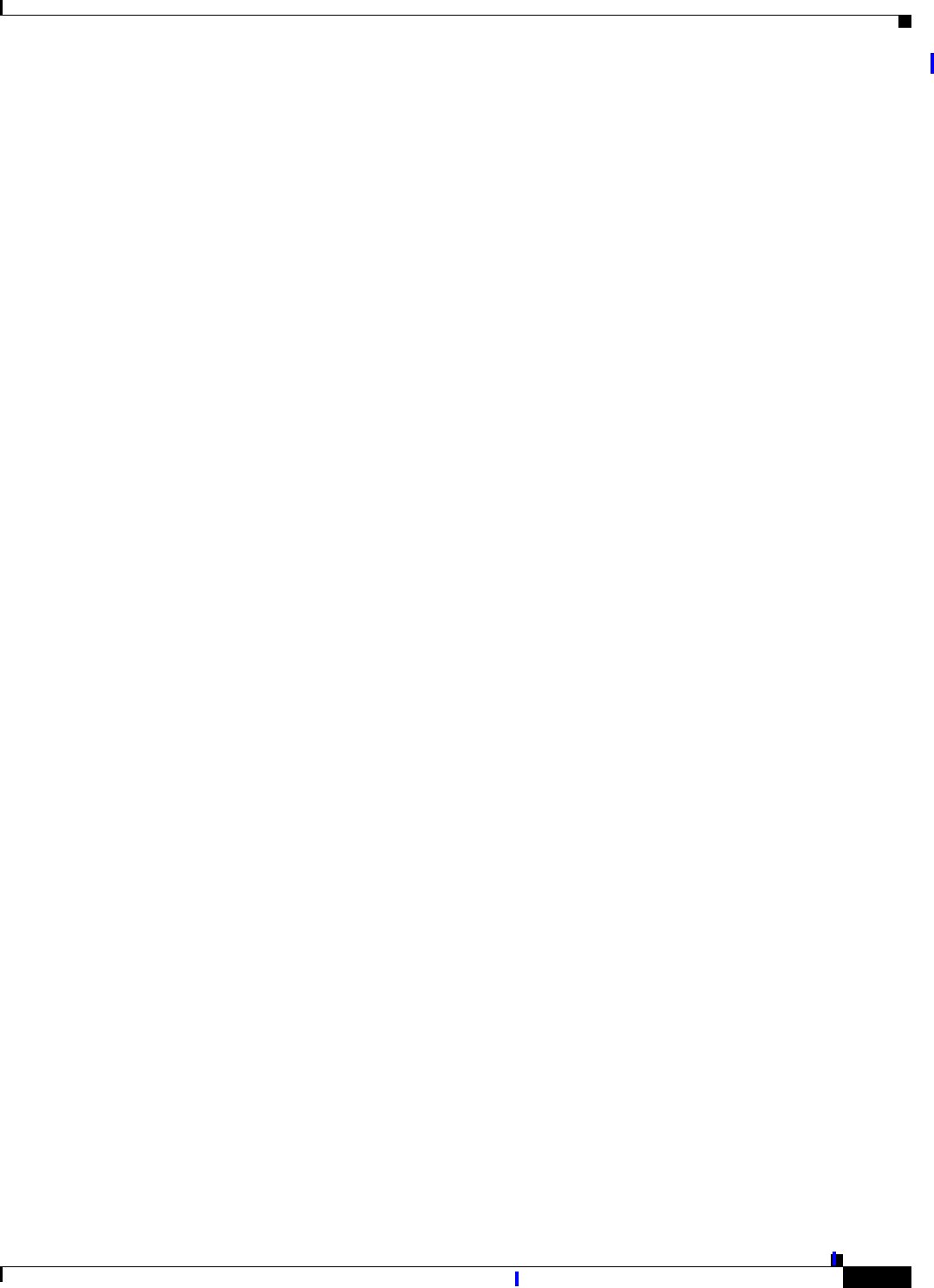
5-13
Cisco Billing and Measurements Server User’s Guide
OL-3351-01
Chapter 5 Configuring BAMS for BAF Output
Call Area Provisioning Example
Banded Message Rates
In Figure 5-1, many zones are not adjacent to other zones. The following commands set up MESSAGE
rate call types for calls from zone 6 and zone 8, which are not adjacent to each other but are in the same
LATA. In the example shown in Figure 5-1, many zone relationships of this type could occur.
prov-add:RATING-TYPE:ORGZONE=6,TRMZONE=8,RATETYPE="MESSAGE"
prov-add:RATING-TYPE:ORGZONE=8,TRMZONE=6,RATETYPE="MESSAGE"
Configuring Trunk Groups for InterLATA Calls
Calls that cross LATA boundaries are normally considered toll calls, unless the zones are adjacent or an
exception case is entered with the RATE-EXC tag ID. Because the default call type is interLATA (when
either originating or terminating NPANXX is not found in the Zone Information table), the only
provisioning required is on the ingress or egress trunk group.
For BAF billing records, the connectivity of the ingress or egress trunk determines the BAF direction of
the calls. When configured properly, BAMS marks interLATA calls as INTERLATAORIGINATING or
INTERLATATERMINATING. Because many telephone plan areas require only 7-digit dialing, the
Trunk Group table is also used to populate default originating and terminating NPAs when fewer than
10 digits are received for the A number or the B number. Finally, each trunk group has multiple circuits,
and the count of the number of circuits is captured in the Trunk Group table for different measurement
calculations.
Although there are many trunk groups, in the example shown in Figure 5-1, we configure only a few
trunk groups for Direct (to an end office) and a few trunk groups for Tandem (to an access tandem type
office). All trunk groups must be provisioned in the table for proper BAMS operation. Only a small
sample is shown here:
prov-add:TRUNKGRP:trunkgrp=123,connection="D",orgnpa=703,trmnpa=202,circuits=72
prov-add:TRUNKGRP:trunkgrp=124,connection="T",orgnpa=703,trmnpa=201,circuits=24
prov-add:TRUNKGRP:trunkgrp=223,connection="D",orgnpa=703,trmnpa=202,circuits=72
prov-add:TRUNKGRP:trunkgrp=227,connection="T",orgnpa=703,trmnpa=408,circuits=96
Configuring Adjacent Area Codes
Adjacent area codes present no problem to BAMS, because the key for the various lookup tables is based
on the entire NPA-NXX (6-digit) string. Trunk groups must be provisioned, and, in the case of fewer
than 10-digit dialing, they must indicate default originating and terminating NPAs.
Configuring IntraLATA Calls
Cases might occur where a billing design does not use FLAT, or designates calls for adjacent zones to
something other than flat rate so that the downstream system can treat those calls differently. The
following example shows configuration for intraLATA calls between zones within the same LATA:
prov-add:RATING-TYPE:orgzone=5,trmzone=4,ratetype="INTRALATA"
prov-add:RATING-TYPE:orgzone=5,trmzone=6,ratetype="INTRALATA"
prov-add:RATING-TYPE:orgzone=5,trmzone=6,ratetype="INTRALATA"
prov-add:RATING-TYPE:orgzone=5,trmzone=6,ratetype="INTRALATA"



